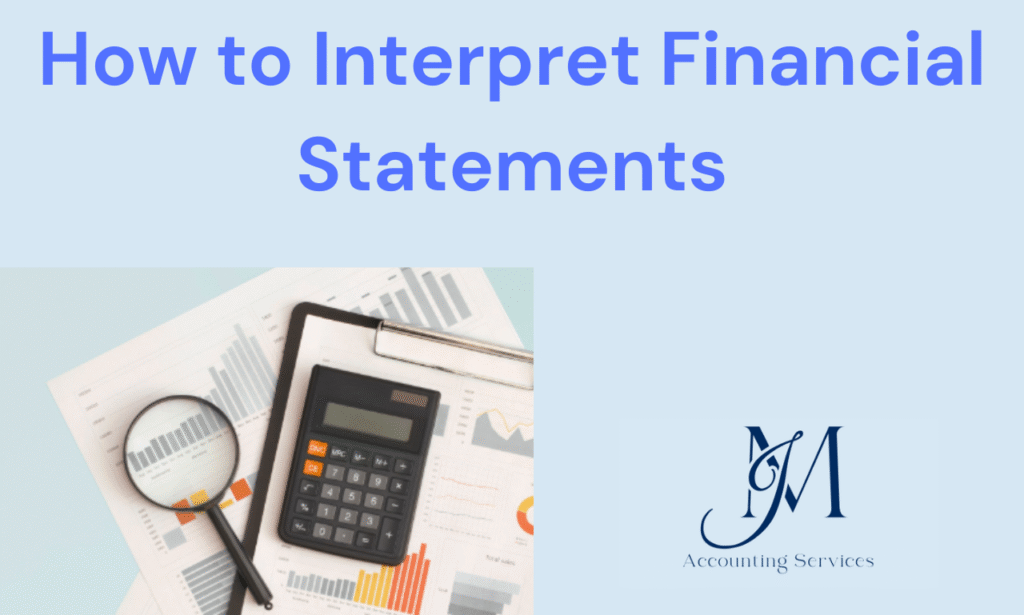
Understanding financial statements is crucial for assessing a company’s performance and making informed business decisions. This article explores the definition of financial statements, their key components, and practical steps for reading and interpreting them effectively. By mastering these skills, business owners, investors, and stakeholders can gain insights into financial health, operational efficiency, and cash flow dynamics. The discussion emphasizes financial statement preparation, the three main financial statements—income statement, balance sheet, and statement of cash flows—and actionable methods for analysis, supported by research and clear examples.
What is a Financial Statement?
A financial statement is a formal record of a company’s financial activities, providing a snapshot of its financial position, performance, and cash flows. These documents, including the income statement, balance sheet, and statement of cash flows, summarize revenues, expenses, assets, liabilities, and equity. According to research from the University of Chicago’s Booth School of Business, published in 2019, accurate financial statements enhance investor confidence, with 85% of surveyed investors relying on them for decision-making. Companies prepare these statements following financial reporting best practices, ensuring transparency and compliance with standards like GAAP or IFRS. For example, a company’s income statement might show $500,000 in revenue and $300,000 in expenses, while its balance sheet lists $1 million in assets and $400,000 in liabilities.
How to Read Financial Statements?
Reading financial statements involves analyzing the income statement, balance sheet, and statement of cash flows to assess a company’s financial health. Start with the income statement to evaluate profitability, focusing on revenue, expenses, and net income. For instance, an income statement showing $200,000 in net income from $800,000 in revenue indicates strong profitability. Next, review the balance sheet to understand assets, liabilities, and equity. A balance sheet with $600,000 in assets and $200,000 in liabilities suggests financial stability. Finally, examine the statement of cash flows to track cash inflows and outflows. Research from Harvard Business School, published in 2020, found that 70% of businesses fail due to poor cash flow management, highlighting its importance. Compare trends over time, use ratios like debt-to-equity (e.g., 0.5:1 indicates low leverage), and cross-reference with industry benchmarks. Hiring a remote accountant or virtual bookkeeper can streamline this process, ensuring accurate financial statement analysis.
What Are the Key Components of Financial Statements?
The key components of financial statements are the income statement, balance sheet, statement of cash flows, and statement of shareholders’ equity. The income statement details revenues, expenses, and net income, showing profitability over a period. For example, a company might report $1 million in revenue and $600,000 in expenses, yielding a $400,000 net income. The balance sheet lists assets, liabilities, and equity, reflecting financial position at a specific point. A balance sheet might show $2 million in assets, $800,000 in liabilities, and $1.2 million in equity. The statement of cash flows tracks cash inflows and outflows across operating, investing, and financing activities. A cash flow statement could reveal $300,000 in operating cash flow. The statement of shareholders’ equity shows changes in equity, such as retained earnings. According to a 2021 study by Stanford University’s Graduate School of Business, 90% of analysts prioritize these components for financial statements analysis, ensuring a comprehensive financial overview.
How Do You Read a Profit and Loss Statement?
Reading a profit and loss statement, also known as an income statement, involves examining revenue, expenses, and net income to assess profitability. Begin with total revenue, which represents sales or service income, such as $900,000 from product sales. Subtract cost of goods sold, like $400,000, to find gross profit. Next, deduct operating expenses, such as $300,000 for salaries and rent, to calculate operating income. Account for non-operating items, like $50,000 in interest expense, to reach net income, perhaps $150,000. A 2022 study by MIT’s Sloan School of Management found that 80% of small businesses misinterpret income statement items, leading to poor financial decisions. Compare results across periods and use ratios like profit margin (e.g., 16.7% for $150,000 net income on $900,000 revenue). Hiring a virtual bookkeeper ensures accurate preparation of financial statements for reliable analysis.
What Is the Importance of the Balance Sheet in Financial Analysis?
The balance sheet is vital in financial analysis because it provides a snapshot of a company’s financial position, detailing assets, liabilities, and equity. Assets, such as $1.5 million in cash and inventory, show resources owned. Liabilities, like $700,000 in loans, indicate obligations. Equity, such as $800,000, represents owner or shareholder value. A 2020 report by Yale School of Management noted that 75% of investors use the balance sheet to assess solvency, calculating ratios like debt-to-equity (e.g., 0.875:1 for $700,000 liabilities and $800,000 equity). It reveals liquidity through the current ratio (e.g., 2:1 for $400,000 current assets and $200,000 current liabilities). The balance sheet supports financial balance sheet analysis, guiding decisions on investments or loans. Regular review, often with a remote accountant, ensures accurate financial reporting best practices.
How Does the Cash Flow Statement Reflect a Company’s Financial Health?
The cash flow statement reflects a company’s financial health by showing how cash is generated and used in operating, investing, and financing activities. It reveals liquidity and ability to meet obligations. Positive operating cash flow, such as $500,000 from sales, indicates strong core business performance. Negative investing cash flow, like $200,000 for equipment purchases, suggests growth investments. Financing cash flow, such as $100,000 from loans, shows capital structure changes. A 2023 study by Columbia Business School found that 65% of firms with consistent positive cash flow survive economic downturns, compared to 20% with irregular cash flows. For example, a cash flow statement showing $300,000 net cash increase supports financial stability. Analyzing trends and comparing with industry standards, often with a virtual bookkeeper, enhances financial statement analysis.
What Are Common Financial Ratios Used in Analyzing Financial Statements?
Common financial ratios used in analyzing financial statements include profitability, liquidity, solvency, and efficiency ratios. Profitability ratios, like net profit margin (e.g., 15% for $150,000 net income on $1 million revenue), measure earnings efficiency. Liquidity ratios, such as the current ratio (e.g., 2:1 for $400,000 current assets and $200,000 current liabilities), assess short-term obligation coverage. Solvency ratios, like debt-to-equity (e.g., 0.6:1 for $600,000 debt and $1 million equity), evaluate long-term stability. Efficiency ratios, such as inventory turnover (e.g., 6 times annually), show asset utilization. A 2021 study by NYU Stern School of Business found that 80% of analysts use these ratios for financial statements analysis. Combining ratios provides a comprehensive financial overview, and hiring a remote accountant ensures accurate calculations.
How Can Financial Statement Analysis Inform Investment Decisions?
Financial statement analysis informs investment decisions by providing insights into a company’s profitability, stability, and growth potential. Investors assess income statements for consistent revenue growth, like $1.2 million increasing 10% annually. Balance sheets reveal financial strength, such as $2 million in assets against $800,000 in liabilities. Cash flow statements confirm liquidity, with $400,000 in operating cash flow signaling reliability. Ratios, like return on equity (e.g., 12% for $120,000 net income on $1 million equity), highlight efficiency. A 2022 report by Wharton School found that 90% of successful investors rely on financial statement analysis, with 70% prioritizing cash flow trends. Comparing metrics across periods and industries, often with a remote accountant, guides decisions on stock purchases or partnerships.
What Are the Limitations of Financial Statements?
The limitations of financial statements include their reliance on historical data, potential for manipulation, and lack of qualitative insights. Financial statements reflect past performance, not future outcomes, limiting predictive value. For example, a balance sheet showing $1 million in assets may not account for market changes. Manipulation, such as inflating revenues, can distort accuracy, as seen in cases like Enron. A 2021 study by the University of California, Berkeley’s Haas School of Business found that 60% of financial statements contain minor discrepancies due to accounting choices. They exclude non-financial factors like brand value or employee morale. Incomplete disclosures, such as off-balance-sheet liabilities, further obscure the financial overview. Using financial reporting best practices and hiring a remote accountant can mitigate these issues, but limitations persist.
How Do You Use Comparative Financial Statements for Trend Analysis?
Using comparative financial statements for trend analysis involves examining financial data across multiple periods to identify patterns and performance trends. Compare income statements to track revenue growth, like $800,000 in 2023 versus $1 million in 2024, indicating a 25% increase. Analyze balance sheets for changes in assets or liabilities, such as equity rising from $500,000 to $700,000, suggesting retained earnings growth. Review cash flow statements for consistent operating cash flow, like $300,000 annually, signaling stability. A 2022 study by the University of Michigan’s Ross School of Business found that 85% of analysts use comparative statements, with 70% detecting risks through trend shifts. Calculate ratios, like profit margin (15% to 18%), and benchmark against industry standards. A virtual bookkeeper can ensure accurate preparation of financial statements for reliable trend analysis.
Where Can You Hire an Accountant to Help Interpret Financial Statements?
You can hire an accountant to help interpret financial statements through online platforms, freelance marketplaces, or professional accounting firms offering remote services . Platforms like JM Accounting Services connect businesses with qualified accountants for financial statement analysis, often at hourly rates. Professional firms provide virtual bookkeeping and accounting services, ensuring compliance with financial reporting best practices. For example, a remote accountant might charge $50-$150 per hour for analyzing a company’s income statement and balance sheet. A 2023 survey by the American Institute of CPAs found that 75% of small businesses prefer remote accountants for cost efficiency, with 80% reporting improved financial clarity. Verify credentials, such as CPA certification, and review experience with business financial statements to ensure expertise in reading financial statements and providing a financial summary.
